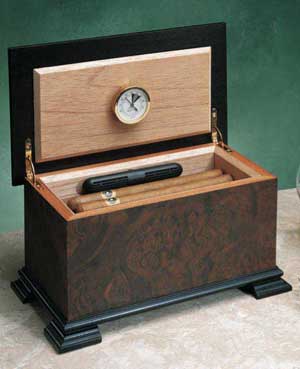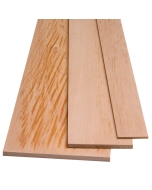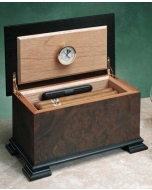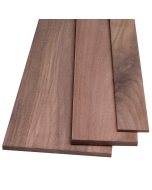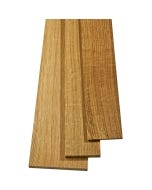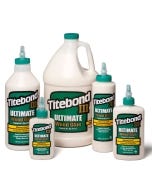How to Deal with Expanding Wood in a Humidor?
I am restoring an antique walnut humidor stand. As part of the restoration, I am replacing the old tin within the walnut humidor with 3/8-inch Spanish cedar. The individual boards will be about 6 inches wide. I heard that when the cedar is put in a moist environment (such as a humidor) that it expands. Does it? If so, should I try to leave spacing between the boards? If so, how much? Will it expand in thickness, length (with the grain), or width (across the grain)? Should I leave space as I'm gluing in the boards for the expansion? It'll be beautiful once completed, but I also want it to retain the moisture (70 percent humidity) inside the humidor. I'd really appreciate any wisdom you might be able to offer. - Gregg Hamelin
Rob Johnstone: All wood expands as its fibers absorb moisture from its environment - be it Spanish cedar, oak or ironwood. Wood expands primarily across the grain of a board (its width), less in its thickness and not at all in its length. As you may have discovered, its cumulative measurable expansion becomes greater the wider a board is. Rather than simply lining the opening with the Spanish cedar, I would personally build a small box to fit into the opening in the walnut stand. When I did that, I would leave room (perhaps a scant 1/16th) all around the Spanish cedar liner box, and hold the top edge of the cedar just below the top of the opening.
Tim Inman: Yes, the cedar will expand when it increases in moisture content, just as all woods will do. Gluing the wood directly to the sides of the cabinet without allowing for the moisture content and wood movement can have disastrous effects on the cabinet. When dry, the cedar will pull the sides and warp them; when wet, the cedar will push the joints pretty hard. I think my best advice would be to make a cedar box that simply sits inside the cabinet. Leave room for expansion and contraction. Trim it off so nobody knows how you did it. One of the reasons you found a metal insert box was exactly to prevent the troubles you are correctly anticipating with high moisture wood. The idea was that the metal would allow the higher moisture environment for the tobacco products, but keep that moisture away from the "real" cabinet. At least that was the idea....
All wood, whether finished or not, eventually equalizes with the moisture surrounding it. Finished wood equalizes slower, unfinished wood equalizes faster, but it always comes to equilibrium. So wood movement as a consequence of moisture changes must always be provided for in quality cabinetry.
Keep the inspiration coming!
Subscribe to our newsletter for more woodworking tips and tricks
